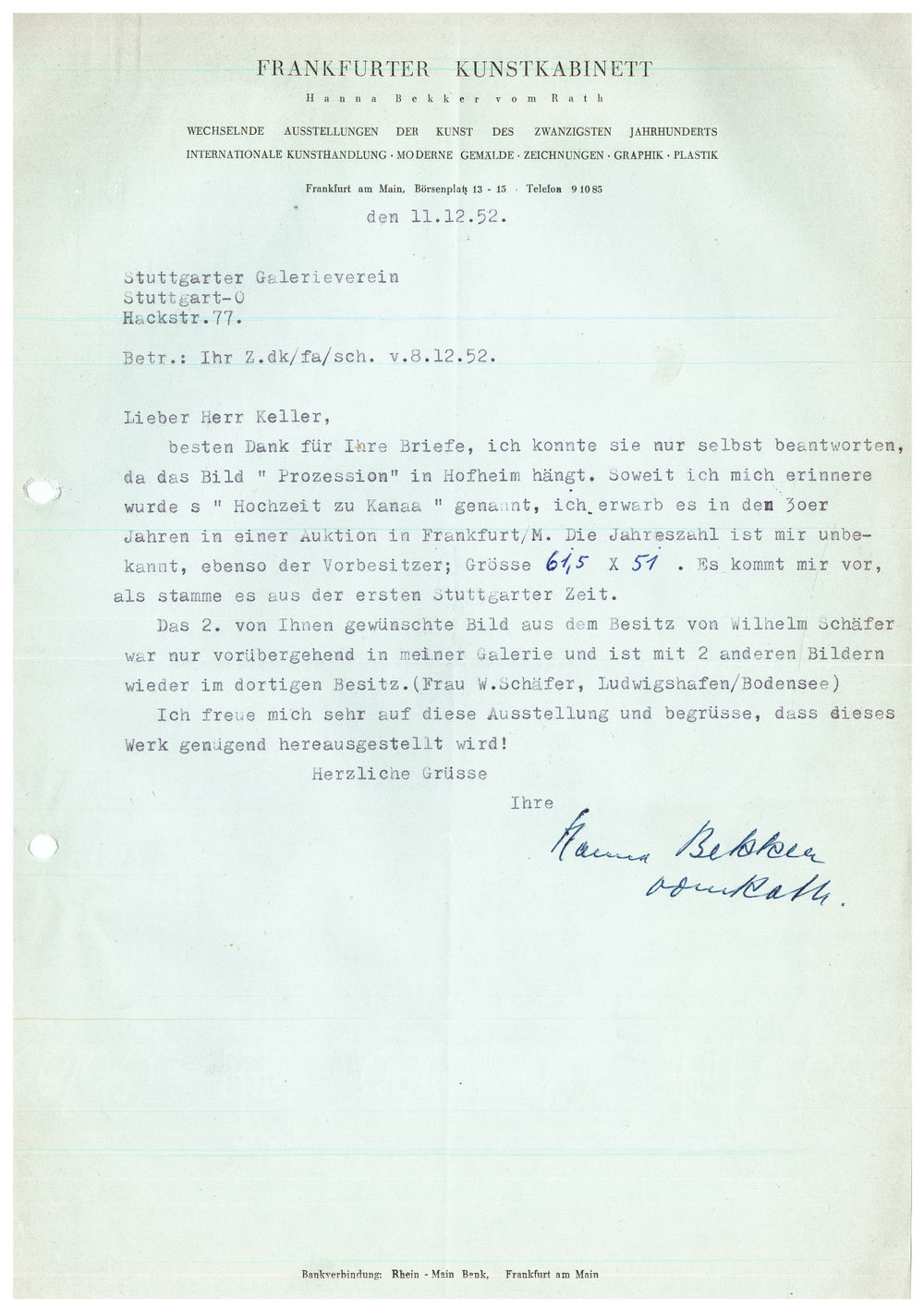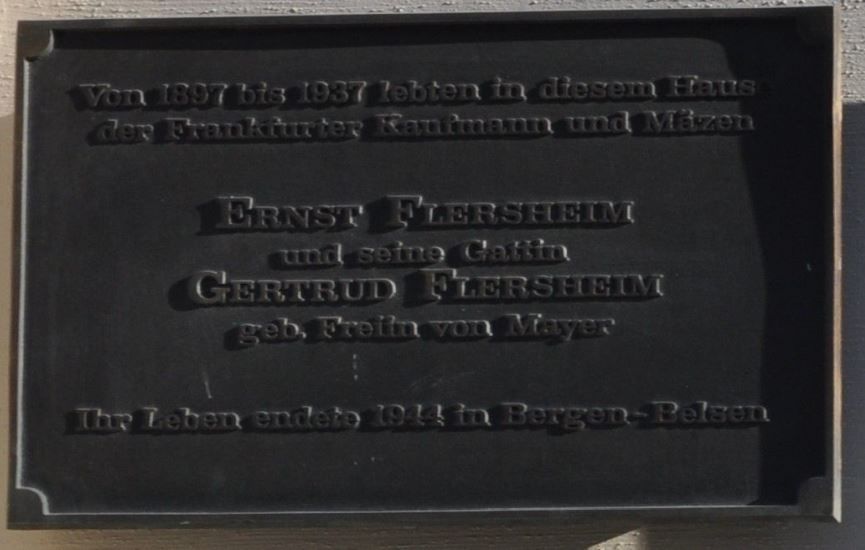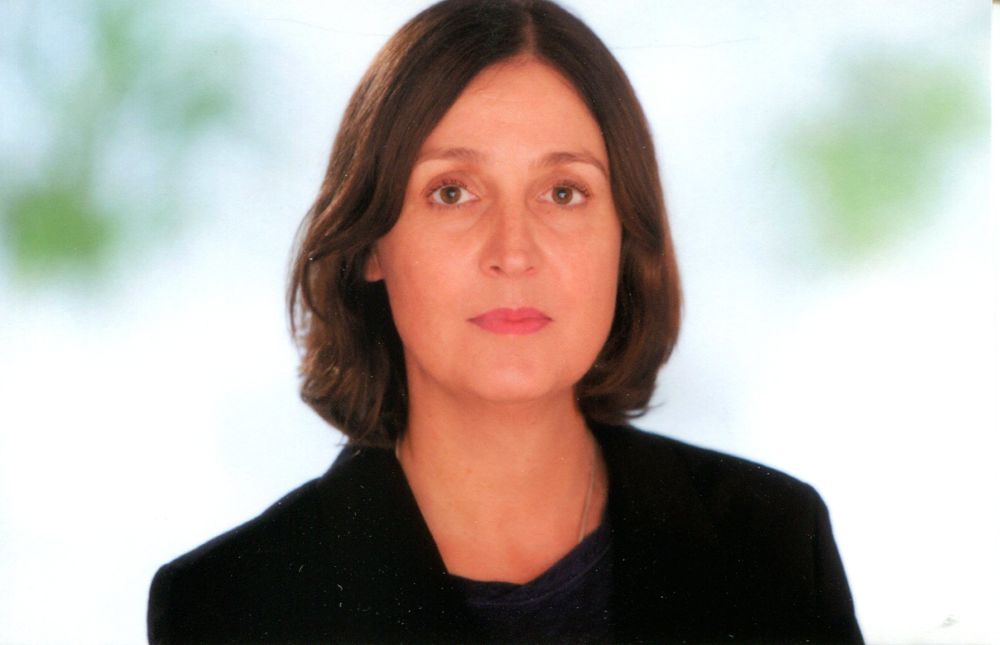At the end of May 2020, the Society for the Promotion of the Fine Arts in Wiesbaden restored ownership of the painting Prozession im Gebirge [Mountain Procession] by Adolf Hölzel to the heirs of the Flersheim family of Frankfurt. The painting came to Museum Wiesbaden in 1987 as part of the estate of Hanna Bekker vom Rath (1893-1983) and has been on permanent loan to the State Museum of Hesse ever since. Until its transfer to the heirs in the USA, the painting will be on exhibit in the museum's painting gallery from 30 June to 30 August 2020. Photo: Museum Wiesbaden / Bernd Fickert
![Adolf Hölzel, Prozession im Gebirge [Mountain Procession], 1909/10 Oil on canvas, 62 x 50.5 cm, heirs of Ernst and Gertrud Flersheim. Photo: Museum Wiesbaden / Bernd Fickert](/en/assets/components/phpthumbof/cache/1.1_Hoelzel_Adolf_Prozession_150.f3ff0a39ecb6b30a3163d994d1dfc619.jpg)
The provenance of the painting, which entered the holdings of Museum Wiesbaden more than 30 years ago, appeared for a long time to be unquestionable, as references indicated it had been acquired by Hanna Bekker vom Rath “before 1924 at an auction in Frankfurt”. (Exhibition catalogue. Schwerpunkte. 30 Neuerwerbungen aus der Sammlung Hanna Bekker vom Rath [30 New Acquisitions from the Hanna Bekker vom Rath Collection], Wiesbaden 1988, p. 117, color catalogue No. 25.)
However, a search of the historical record for the painting’s appearance at Frankfurt auctions revealed evidence that it may have been acquired later than 1924. In fact, the catalogue for the auction from 11-13 May 1937 at the Frankfurt art auction house Hugo Helbing lists under item no. 32 a painting by Adolf Hölzel, “‘Prozession im Gebirge‘ [Mountain Procession], 1913, 60 x 49 cm”. The consignor is recorded in the registry of owners with the abbreviation “Fl.”

A subsequent review of the Lost Art database of the German Lost Art Foundation revealed that the painting had been auctioned off in 1937 and that the heirs of Ernst and Gertrud Flersheim had been looking for it since 2005. The next step, then, was to determine whether, in view of the almost identical measurements and description in the auction catalogue with the painting in Wiesbaden, it could be assumed that the two paintings were one and the same, and whether Hanna Bekker vom Rath had, in fact, acquired the painting in May 1937, after all.

Research on the Painting
There are numerous references, dating as early as 1915, to the painting, which was produced in 1908/9. After 1945, it was frequently shown at exhibitions of Adolf Hölzel’s work on loan from Hanna Bekker vom Rath – as the labels on the reverse of the painting show. In the context of a large-scale “commemorative exhibition on the occasion of Adolf Hoelzel’s hundredth birthday,” organized in 1953 by the Stuttgarter Galerieverein in cooperation with the Württembergische Staatsgalerie Stuttgart, a letter from Hanna Bekker vom Rath was preserved in the archives of the Staatsgalerie Stuttgart, which provides further information on the date of acquisition. According to her letter, Hanna Bekker vom Rath acquired the painting “Prozession” in the 1930s at an auction in Frankfurt a. M. The exact year and previous owner were unknown to her.
Contacting the Heirs
On the basis of these findings, the Society for the Promotion of the Fine Arts in Wiesbaden contacted representatives of the heirs of Ernst and Gertrud Flersheim and expressed its willingness, in keeping with the Washington Principles, to establish the identity of the Adolf Hölzel painting and to find a fair and equitable solution together.
Representatives of the heirs were able to obtain an annotated version of the Helbing catalogue for the auction on 11-13 May 1937. According to this, the purchaser of catalogue item no. 32 for 105 Reichsmark was without a doubt “Ms. Hanna Becker”. A price list for the auction at Hugo Helbing, Frankfurt am Main, published in the magazine Die Weltkunst, confirms that the painting was sold for 105 Reichsmark.

The Collection of Ernst and Gertrud Flersheim
The Flersheim family resided in Frankfurt am Main for many generations until the era of National Socialism. Ernst Flersheim was born in Frankfurt a. M. in 1862 and completed his commercial apprenticeship in his father's shop in Frankfurt's Töngesgasse. Ownership of the company passed to the two brothers Ernst and Martin Flersheim (1856-1935) in 1892, from which point they specialized in the trade of horn, cane, ivory and tortoiseshell, developing the company Flersheim-Hess into an international enterprise.
After their marriage in 1892, Ernst and Gertrud Flersheim (née von Mayer, 1872-1944) lived with their three children Hans (1893-1933), Edith (1895-1992) and Margarete (1904-1940) in Frankfurt's Westend. Their mutual interest in art led them to amass an important collection of paintings by predominantly German artists of the 19th and 20th centuries, including the work of such figures as Hans von Marées, Max Slevogt, Hans Thoma and Wilhelm Trübner, as well as international representatives of Classical Modernism, such as Paul Gauguin, Ferdinand Hodler, Ignazio Zuloago and Jan Toorop.

In the rooms of their home in Frankfurt's Myliusstraße 32, where the composer and pianist Clara Schumann (1818-1896) had lived from 1878-1896, the collection was displayed to their guests and art enthusiasts. Through numerous memberships in civic associations and societies, the Flersheims took an active part in the cultural life of the city and on several occasions made works from their collection available on loan for exhibitions.
Persecution and Emigration
After the National Socialist seizure of power in January 1933, Frankfurt’s Jewish population experienced ever-greater defamation and humiliation. Beginning in April 1933, discriminatory measures against Jewish fellow citizens and their businesses became increasingly severe. As a result of their Jewish origins, the family of Ernst and Gertrud Flersheim was among those persecuted on racial grounds during the National Socialist era.
Steadily intensifying anti-Semitic repression forced the family to flee from Frankfurt in 1936/37 to presumably safe foreign countries. Their two daughters Edith Eberstadt, née Flersheim, and Margerete Wertheim, née Flersheim, were able to flee with their husbands and children to London and Brussels in 1936. Ernst and Gertrud Flersheim escaped to Amsterdam in 1937. After the German Wehrmacht invaded the Netherlands in May 1940, the two were arrested and later deported to the Bergen-Belsen concentration camp, where they died in 1944. Margerete Wertheim and her family also lost their lives as a result of persecution. Margerete, who suffered from a serious illness, took her own life in exile in Brussels, fearing she would be a burden to her husband Rudolf and son Hans. In 1942, Rudolf and Hans Wertheim were deported from Drancy to Auschwitz, where they were murdered. Edith Eberstadt, née Flersheim, survived the Holocaust in England with her husband Georg Eberstadt and their two children Walter and Bridget Eberstadt.
In the course of their emigration to Amsterdam in May 1937, Ernst and Gertrud Flersheim auctioned off substantial parts of their art collection at the Frankfurt auction house Hugo Helbing. After 1945, their daughter Edith Eberstadt endeavored to obtain restitution of the objects from her parents’ art collection. Some of the paintings in private collections and public museums were located and amicable settlements reached and restitution made. The whereabouts of the Hölzel painting, however, remained long unknown.

Miriam Olivia Merz
Central Office for Provenance Research in Hesse
Translated by Lance Anderson